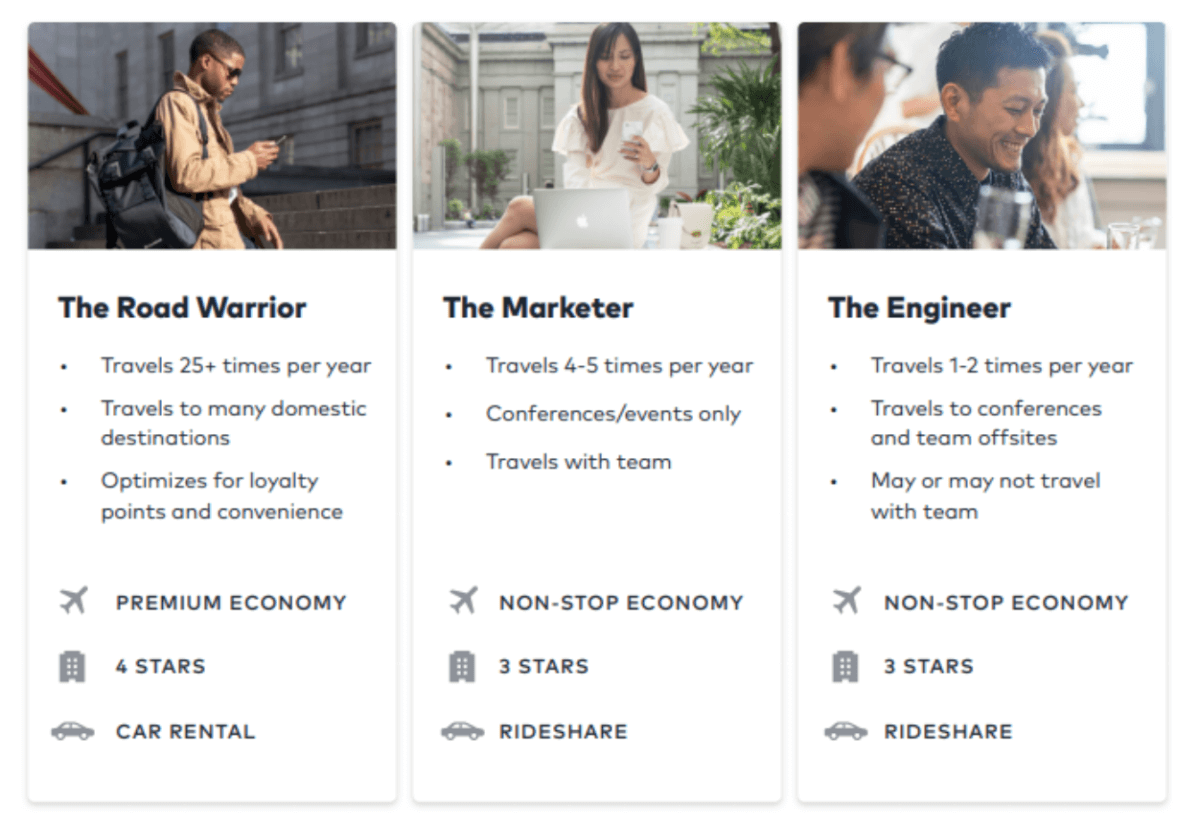Managing the Travel Bottom Line: Employee Stress vs. Cost Considerations
The almighty dollar. It drives so much of what we do, both personally and professionally. It also is a primary driver behind many workplace policies. However, when it comes to corporate travel, the bottomline can’t be the only consideration. Designing flexible corporate travel policies that can work to alleviate employee stress and improve performance should also be a key factor.
In fact, Scott Solombrino, GBTA COO and executive director highlights, “As the workforce continues to diversify, there is no one-size-fits-all approach when it comes to business travel, meaning choice and flexibility should be a key consideration when developing travel policies.”
Keeping this in mind, think about your corporate travel policy. Is saving a few dollars really worth causing performance-impacting employee stress?
Develop Traveler Personas
In the world of business travel, one-size-fits-all is definitely not the name of the game. Employees need to be focused on the purpose for the trip–whether it be a key prospect, upcoming renewal, or speaking engagement–not stressing over the length of a layover.
We recommend developing traveler personas. For instance, if a member of your team is only traveling a few times a year, not typically presenting to clients or prospects, and is usually on the road with the team, non-stop economy is likely fine. However, for your true road warriors, the population of your organization that is non-stop on-the-go, consider upping their travel allowance to include premium economy. They’ll likely be appreciative of the extra elbow room to dot the i’s and cross the t’s on the presentation they are flying in to deliver.

Consider the Actual Trip
There are a few variables when it comes to business travel that should be considered when setting company policy and budget flexibility. First, think about domestic vs. international travel and booking requirements. If an employee is traveling overseas and has a long-haul flight ahead of them, your organization might want to consider upgrading the fare class, enabling them to have a bit more space to not only work, but hopefully rest.
Another consideration is travel timing and business needs. It’s imperative for employees to feel prepared before a big client presentation or speaking engagement. The last thing you want is for them to feel rushed or exhausted from catching a 5 a.m. flight. We suggest building a “buffer” into the travel time versus dictating crazy requirements to save a few hundred dollars. For instance, if there is a late morning meeting, provide the option to fly in the afternoon or evening the day before. Your business travelers will be able to get in, get settled, and spend additional time preparing rather than worrying about the “what ifs” of a delayed flight, traffic on the freeway getting in from the airport, or other factors.
School Employees in Loyalty Programs
Loyalty programs are a fantastic way for business travelers to gain additional perks and rewards that can be used for personal use as well. Frequent flyers can earn cabin upgrades or other additional in-flight perks–saving your budget while making trips more comfortable. Additionally, it will enable them to accumulate miles for their own adventures. TravelBank stores loyalty program information for travelers, streamlining the capture of points or miles.
Finding the Middle Ground
We firmly believe that there is a middle ground when it comes to business travel and the balance between the bottom line and employee happiness. It’s imperative to remember that happy employees will work harder for your organization and that travel policies need to be amended based on the changing times and business needs.


